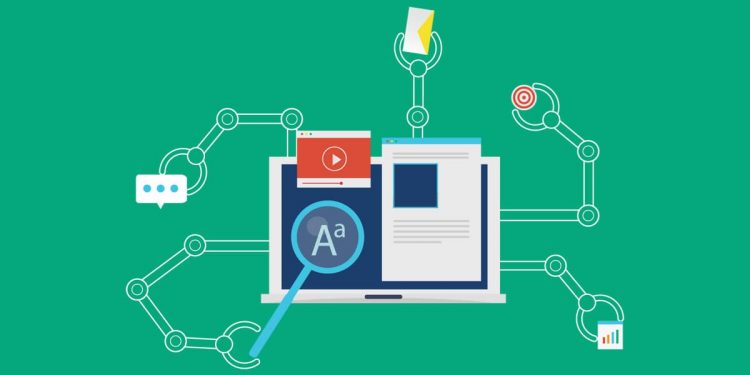Robotic Process Automation (RPA)
Robotic Process Automation is a software technology to create bots that can learn and execute rule-based business processes. These bots can interact with applications like humans but better. They can work non-stop, faster, and with reliability and precision.
They manage repetitive and time-consuming tasks by interpreting trigger responses and communicating with systems. They integrate with backend systems to reduce the operating costs of business.
RPA bots are easy to set-up and use. They can adapt to any interface so there’s no need to change existing business systems in order to automate. RPA can manage legacy as well as existing systems. It saves time and effort to a major extent.
Robotic Process Automation is an independent, intelligent, and scalable platform. RPA ensures increased productivity, flexibility, increased customer satisfaction, and cost-effectiveness.
Following are the types of RPA:
- Attended Automation – while performing automation processes, these kinds of tools require human intervention.
- Unattended Automation – These kinds of tools are intelligent and possess decision-making capabilities.
- Hybrid RPA – They are a combination of both attended and unattended automation.
General functions of RPA include opening applications and emails, copy-pasting and/or moving files, data extraction and processing, integrating with new or existing tools, and so on.
Robotic Process Automation (RPA) Tools:
RPA tools are used widely. They are crucial for the automation of back-office activities. User-friendliness, cost, scalability, and maintenance service by the company should be taken into account before selecting a tool.
A few examples of tools are:
1. UiPath
2. Automation Anywhere
3. AssistEdge
4. Blue Prism
5. Pegasystems
6. KOFAX
7. WorkFusion
8. Power Automate
9. Linx
10. HelpSystems
11. Contextor
12. Kryon
13. NICE Systems
14. Robot Framework
15. G1ANT
Benefits of using RPA tools are:
- Helps mechanize the task of processing large numbers.
- Everything is automated which means there is no need for training.
- Defects can be discovered in real-time.
- Helps increase scalability.
Benefits of Adopting RPA
Enabling Robotic Process Automation will streamline the organization’s workflow. It is easy to train software robots. They integrate seamlessly into any system. They’re reliable and quick. RPA reports progress in real-time so the company can make strategic decisions based on this information. It delivers profitability and accuracy by solving problems, improving processes, and conducting the analysis. This results in new opportunities and employee engagement. Some other benefits include:
- Greater accuracy
- Cost reduction and savings with faster Return on Investments (ROI)
- Increased speed and productivity
- Employee satisfaction (since they can now contribute to more value-added work)
- Improved compliance in accordance with regulations and standards
- Customer satisfaction
- Lower operational risk
- Improved internal processes
RPA enables business processes to be more flexible and adapt to unforeseen circumstances.
Digital Transformation with RPA
RPA holds the ability to automate business processes quickly. It eliminates human intervention and provides a wealth of business intelligence. The digital transformation of an organization starts by deploying RPA because of its cost-effectiveness. It is a means of gaining a competitive edge by modernizing operations.
- Robotic Process Automation can ensure the following:
- Cost savings: 25%-50%
- Increase in Process Speed: 80%-90%
- Increase in service levels, employee productivity, and capacity: 35%-50%
- Reduction in Full-Time Equivalent (FTE)
RPA focused industries
Following are a few examples where RPA is used on a day-to-day basis.
- Banking
- Insurance
- Manufacturing
- Retail
- Telecommunications
- Healthcare
RPA’s Impact on Freedom of Information Act (FOIA)
The Freedom of Information Act allows the general public to access data held by the national government. A “right-to-know” legal process is established by which requests may be made to the information held by the government. It can be received for free or at minimal cost, holding certain exceptions.
The agency must respond in detailed writing about the amount of material found and released. If for some reason, the requested material cannot be released, a detailed explanation for this is required as well.
A request may be declined in part or whole if determined that the information falls under one of the nine exemptions. An appeal can be made if an FOIA request is denied.
The time taken to respond to an FOIA request depends on the nature of the information. The same applies to the appeals of denied requests. For instance, a simple appeal takes 1-5 workdays whereas a complex appeal takes over 20 working days.
Therefore, responding to these FOIA requests requires ample staff. The staff needs to copy, process, and respond to these requests. This is an expensive affair. Some agencies have full-time staff while others have none at all. This can result in a massive backlog. Robotic Process Automation allows agencies to automate these tedious jobs instead of depending on large teams of staff doing manual work. RPA can accelerate the process and increase efficiency.
Conclusion
RPA has now become an even more important tool than just being used for performance improvement and mere cost savings. Particularly, in government organizations where data is unimaginably large with countless archives that need to be sifted through. The advantages of RPA in such instances is far beyond what meets the eye. For an agency such as the FOIA, RPA helps with quick turnaround time and accurate results. RPA also helps the agency maintain an uninterrupted uptime and process requests on a 24/7 basis.
If you find this article informative then follow Techdee





